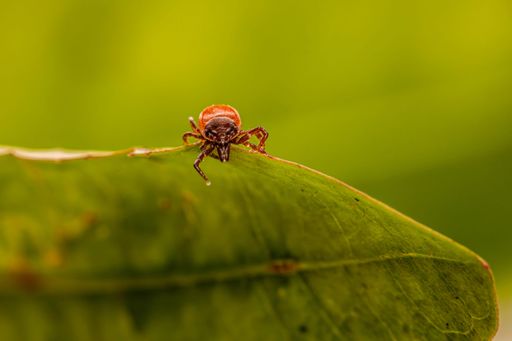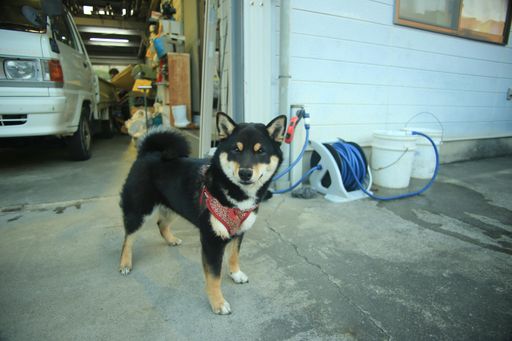Dog poop is one of the most unpleasant aspects of owning a dog. Not only does it smell bad, but it can also pose health and environmental hazards if not handled properly.
In this article, we will cover some of the best practices for dealing with dog poop, from picking it up to disposing of it to preventing accidents.
Whether you have a small or large dog, a puppy or a senior, or a backyard or an apartment, we have some tips for you to make your life easier and cleaner.
Why You Shouldn’t Leave Dog Poop in Your Yard
You may think that leaving dog poop in your yard is harmless, after all, it’s natural and biodegradable, right? Wrong. Dog poop can actually cause serious problems for your lawn, your family, and your community. Here are some of the reasons why you should always pick up your dog’s poop from your yard:
- Dog poop can kill your grass and plants. Dog poop is acidic and contains high levels of nitrogen, which can burn your lawn and create brown spots. It can also prevent water and nutrients from reaching the roots of your plants, causing them to wilt and die.
- Dog poop can attract pests and parasites. Dog poop can attract flies, rodents, and other unwanted visitors to your yard, who may spread diseases and damage your property. Dog poop can also harbor harmful parasites such as roundworms, hookworms, tapeworms, and giardia, which can infect your dog, other animals, and even humans. Children are especially at risk of contracting these parasites from playing in contaminated soil or sand.
- Dog poop can pollute the water supply. Dog poop can wash away with rain or irrigation water and end up in storm drains, rivers, lakes, and oceans. This can contaminate the water with bacteria such as E. coli and salmonella, which can cause illness in humans and animals. According to the Environmental Protection Agency (EPA), dog poop is one of the leading sources of water pollution in the United States.
How to Properly Bag and Dispose of Dog Poop
The most common and convenient way to deal with dog poop is to bag it and throw it away in the trash. However, not all bags are created equal, and not all trash cans are suitable for dog poop. Here are some tips on how to bag and dispose of dog poop properly:
- Use a sturdy and leak-proof bag. You don’t want to use a thin or flimsy bag that can tear or puncture easily, exposing you and others to the contents. You also don’t want to use a bag that has holes or gaps that can let the odor escape. You can use plastic grocery bags or newspaper bags as long as they are intact and clean. You can also buy special dog poop bags that are thicker, stronger, and sometimes scented or biodegradable.
- Pick up the poop as soon as possible. The longer you leave the poop on the ground, the more likely it is to dry out, crumble, or get stepped on. This can make it harder to pick up and more likely to spread germs. Try to pick up the poop while it is still fresh and moist, using a scooper or a gloved hand if necessary.
- Turn the bag inside out and cover your hand with it. This way, you can grab the poop without touching it directly. Then pull the bag back over your hand and the poop, sealing it inside. Tie a knot at the top of the bag or twist it tightly to prevent any leaks or smells.
- Dispose of the bag in a trash can with a lid. Don’t throw the bag on the ground, in a bush, or in an open bin where it can attract animals or create a mess. Find a trash can that has a lid that closes securely, preferably one that is designated for pet waste or garbage only. If you can’t find a trash can nearby, carry the bag with you until you do. Don’t leave the bag in your car or home where it can stink up the place.
- Wash your hands thoroughly after handling dog poop. Even if you use a bag and don’t touch the poop directly, you should still wash your hands with soap and water after disposing of it. This will help prevent any germs from transferring to your mouth, nose, eyes, or food.
How to Clean Up Dog Poop Accidents Indoors
- Remove as much of the solid matter as possible. Use a paper towel, a plastic bag, or a scooper to pick up the poop and throw it away in a trash can with a lid. Don’t rub or smear the poop, as this will only make it harder to clean and stain the surface.
- Blot the area with a damp cloth or paper towel. Use cold water to moisten the cloth or paper towel, and gently blot the area to remove any excess moisture or residue. Don’t scrub or rub, as this can damage the fibers and spread the stain. Repeat this step until no more color transfers to the cloth or paper towel.
- Apply a stain remover or a homemade solution. You can use a commercial product that is designed for pet stains, such as an enzyme-based cleaner or an oxygen-based cleaner. Follow the instructions on the label and test the product on a small inconspicuous area first to make sure it doesn’t damage or discolor the surface. Alternatively, you can make your own solution by mixing one part white vinegar and one part water, or one part hydrogen peroxide and one part baking soda. Spray or pour the solution on the stained area and let it sit for 10 to 15 minutes.
- Rinse and dry the area. Use a clean cloth or paper towel soaked in cold water to rinse off the solution and blot the area dry. You can also use a fan, a hair dryer, or a dehumidifier to speed up the drying process. Make sure the area is completely dry before letting your dog or anyone else use it again.
- Deodorize the area. Even if you have removed the stain and the smell, your dog may still be able to detect some traces of poop and may be tempted to repeat the accident in the same spot. To prevent this, you can use a commercial product that is designed for pet odors, such as an odor neutralizer or an odor eliminator. You can also sprinkle some baking soda on the area and let it sit overnight, then vacuum it up in the morning. Another option is to use some essential oils, such as lavender, lemon, or eucalyptus, to mask the smell and create a pleasant aroma.
How to Compost or Recycle Dog Poop
If you want to be more eco-friendly and reduce your waste, you can consider composting or recycling your dog poop instead of throwing it away. However, this is not as simple as tossing it into your regular compost bin or recycling bin, as dog poop can contain harmful pathogens that can contaminate your soil, plants, or food. Here are some ways to compost or recycle dog poop safely and correctly:
- Dig a hole in your backyard. This is one of the easiest and cheapest ways to deal with dog poop, as long as you have enough space and don’t live in an area with strict regulations. All you need is a shovel and a spot that is away from any water sources, vegetable gardens, or children’s play areas. Dig a hole that is at least 12 inches deep and 6 inches wide, and bury your dog poop in it. Cover it with soil and mark it with a stake or a flag so you don’t dig it up again. The poop will decompose naturally over time, but you should not use this soil for growing edible plants.
- Use a mini septic tank. This is another option for disposing of dog poop in your backyard, but it requires some initial investment and maintenance. You can buy a ready-made dog waste digester system that works like a mini septic tank, or you can make your own by using a large plastic bucket with a lid and a hole at the bottom. You need to place the system in a sunny spot that has good drainage, and add some water and septic starter (or yeast) to activate it . Then you can add your dog poop to the system regularly, along with some more water and septic starter if needed. The system will break down the poop into liquid fertilizer that will drain into the soil . You should not use this fertilizer for edible plants either.
- Hire a composting company. If you don’t have enough space or time to compost your dog poop yourself, you can hire a professional service that will collect your dog poop and compost it for you. Some companies will provide you with special bins or bags that are compostable themselves, while others will ask you to use regular plastic bags that they will separate later. The companies will then transport your dog poop to their facilities where they will compost it at high temperatures that kill any pathogens. The resulting compost can be used for landscaping or gardening purposes.
- Use worms. This is another way to turn your dog poop into compost, but it requires some special care and attention. You can use a worm bin or a worm tower that contains red wiggler worms, which are different from the earthworms you find in your garden. You need to feed the worms with your dog poop, along with some bedding material such as shredded paper, cardboard, or coconut coir. The worms will eat the poop and produce worm castings, which are rich in nutrients and beneficial microbes. You can harvest the worm castings and use them as fertilizer for your plants, but you should avoid using them for edible plants as well. You also need to monitor the moisture, temperature, and pH levels of your worm bin or tower, and avoid overfeeding or underfeeding the worms.
Conclusion
Remember that dog poop is not only unpleasant but also potentially harmful for you, your dog, and the environment. Therefore, you should always pick up, dispose of, clean up, compost or recycle your dog’s poop properly. You should also train your dog to poop in the right place and prevent accidents from happening indoors. By doing so, you will make your life easier and cleaner, and show respect for yourself, your dog, and others.



















